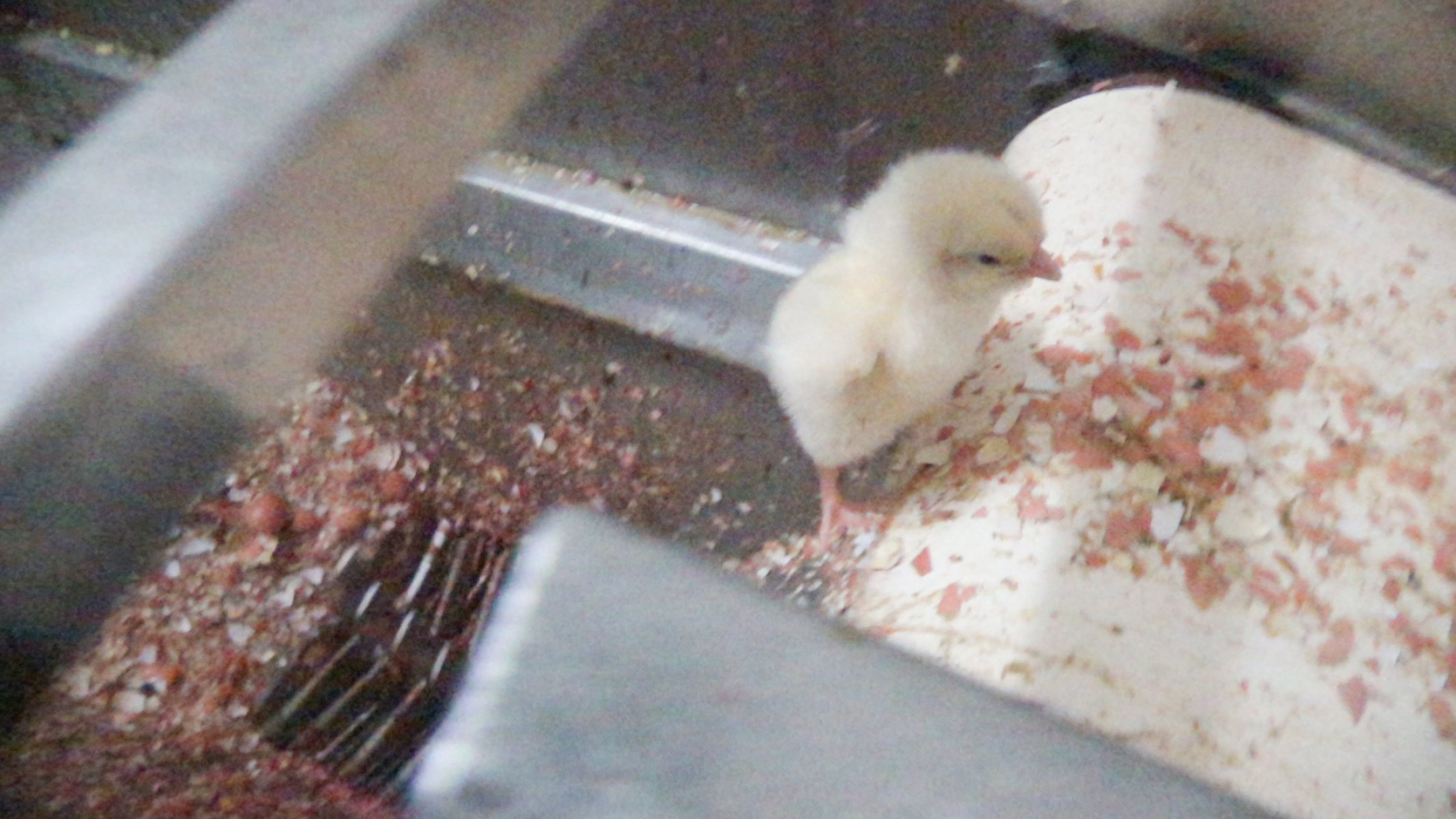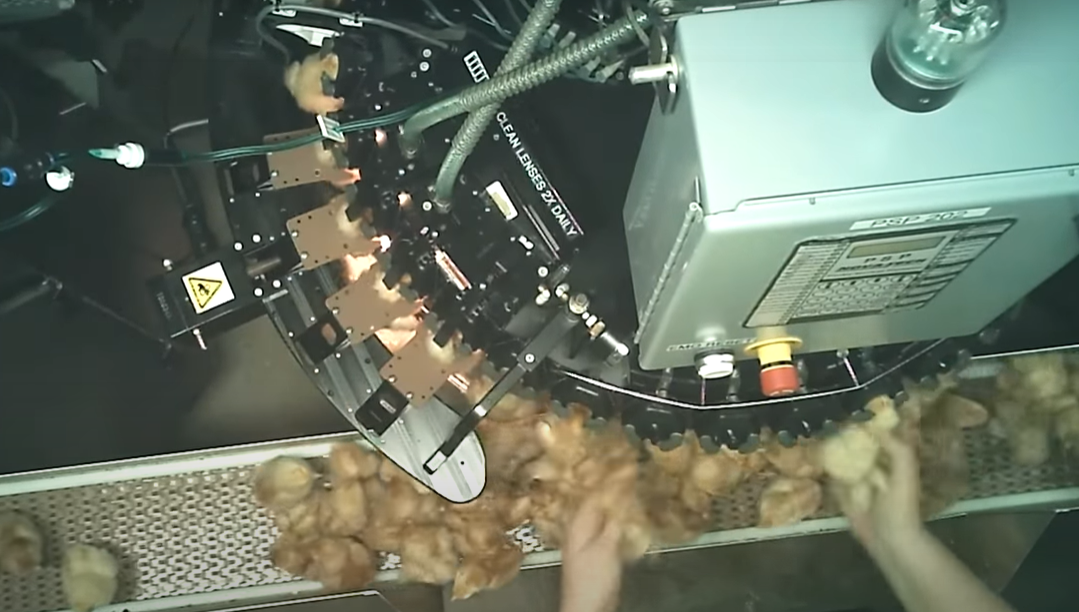Hatchery
Once eggs have hatched, chicks are sorted by sex. Male chicks, unable to ever lay eggs and therefore having no commercial value to the egg industry, are killed on-site only hours after hatching - some 12 million male chicks meet this fate in Australia every year, considered nothing more than waste products of the Australian egg industry. As well as the males, any sick, deformed or 'abnormal' female chicks are also killed at the hatchery. The most common method for killing unwanted chicks is by use of a macerator, an industrial machine that effectively blends or grinds chicks up alive.
 A macerator used to kill day old male chicks.
A macerator used to kill day old male chicks.
Another legally accepted method of killing unwanted chicks is suffocation by carbon dioxide gas. Covert footage has revealed chicks can take over a minute to die when killed this way.
Beak mutilation
To reduce pecking behaviour among flocks, hens are debeaked on their first day of life.
Feather pecking is an injurious behavior where hens pick and pull out the feathers of other hens which can result in feather damage, huge feather loss, open wounds, cannibalism and death.
Feather pecking is an issue in all egg-laying housing systems, though is particularly widespread in cage-free systems where hens are housed with thousands of others and are unable to establish their pecking order. To reduce peck injury mortality rates among flocks, the end of hens' beaks are painfully removed at the hatchery on their first day of life.
 Female chicks being debeaked.
Female chicks being debeaked.
Infrared debeaking - Infrared debeaking is when an infrared laser is applied to the tip of the beak to damage it. Initially the tip of the beak stays intact, but after time it erodes away.
Using the NovaTech infrared system, the chicks' heads are restrained in an automated carousel while the infrared light is applied to the beak.
The soft tissue and function of the beak can be damaged if excessive infrared energy is applied.
Hot blade trimming - Hot blade trimming is when the tip of the beak is removed using a heated blade to cut off the tip of the beak.
.png)
A rescue hen who has been debeaked. Image: Dillon Watkin
A bird's beak is a complex, functioning organ which has an extensive nerve supply and a number of sensory receptors. There is significant evidence demonstrating that hens experience not only acute but also chronic pain due to tissue damage and nerve injury from debeaking. Despite this, no State or Territory law in Australia requires pain relief to be used in conjunction with this procedure.


